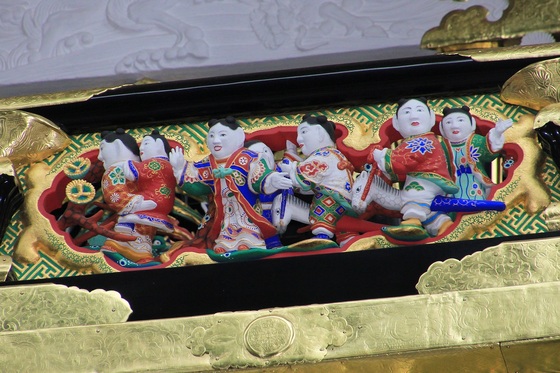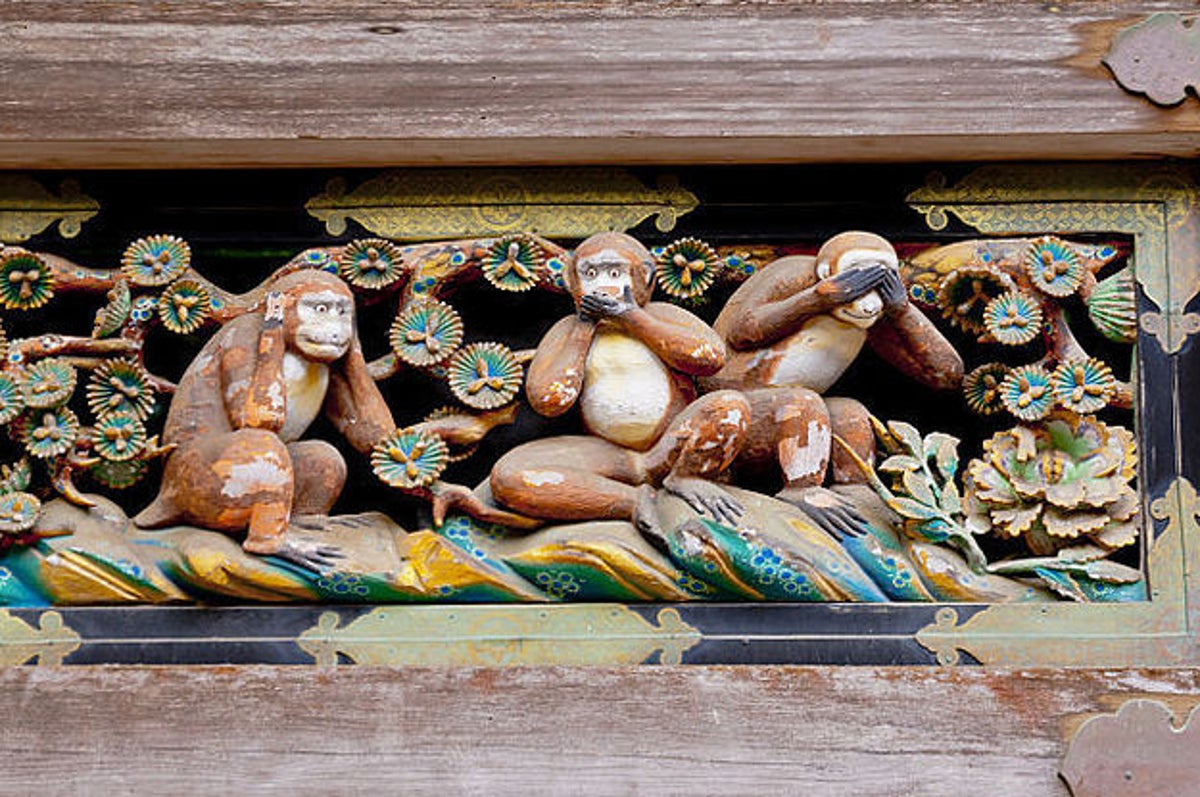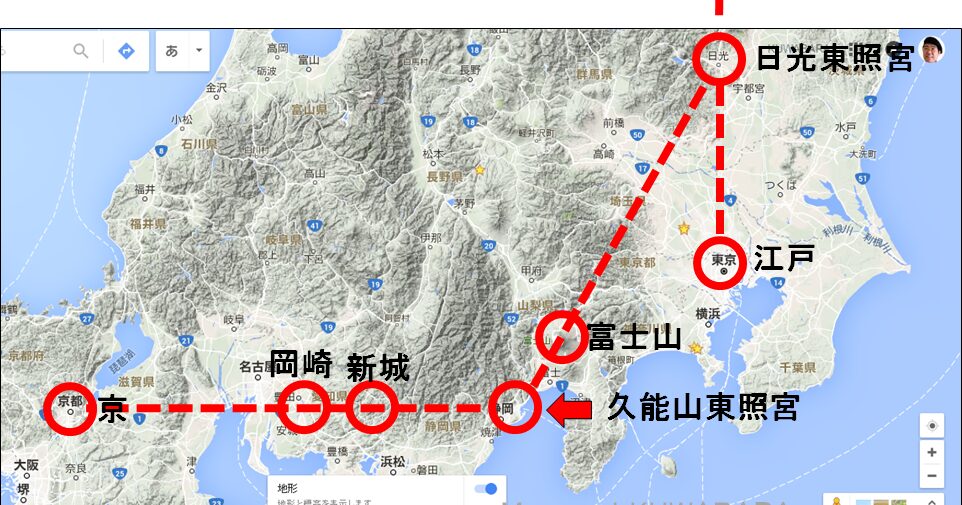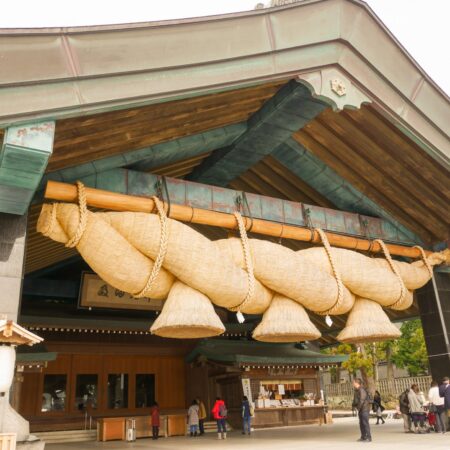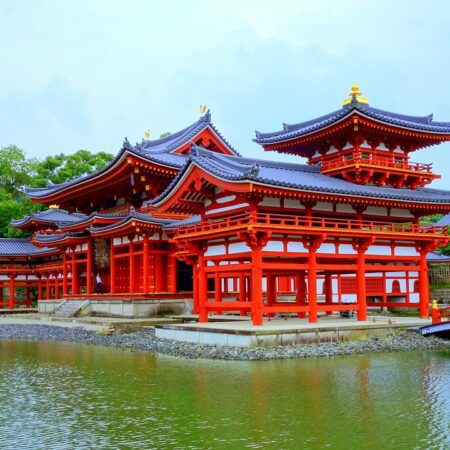Have you ever visited Nikko Toshogu Shrine? Famous for enshrining Tokugawa Ieyasu, the founder of the Edo Shogunate, Nikko Toshogu is a treasure trove of sights, including the resplendently golden Yomeimon Gate, the Three Wise Monkeys (See no evil, hear no evil, speak no evil), and the Sleeping Cat. But why was Nikko chosen as the location for this shrine? And did you know that the countless animal carvings within Nikko Toshogu Shrine each carry significant meanings? This time, we will introduce the lesser-known history, highlights, and trivia of Nikko Toshogu Shrine.
The History of Nikko Toshogu Shrine
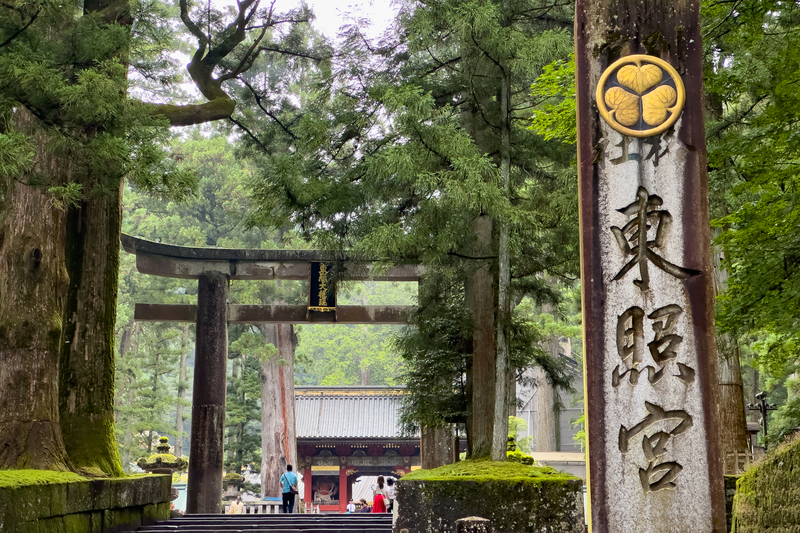
Nikko Toshogu Shrine holds a special place in Japanese history and culture. Established in 1617 (Genna 3), its history is deeply rooted in the will of Tokugawa Ieyasu and his successors. Ieyasu was the first shogun of the Edo period, and his life and testament are crucial elements in the founding of Nikko Toshogu Shrine.
In his later years, Tokugawa Ieyasu resided in Suruga, in the eastern part of Shizuoka Prefecture. He left a will stating, "After the first anniversary of my death, enshrine me at Mount Nikko." Ieyasu likened himself to the immovable North Star and wished to continue watching over the country after his death, as Mount Nikko is directly north of Edo (modern-day Tokyo).
Following this will, the second shogun, Tokugawa Hidetada, built a simple shrine at Mount Nikko. However, Ieyasu's grandson, the third shogun Tokugawa Iemitsu, undertook a large-scale renovation over two years, transforming the shrine into the magnificent structure seen today. This renovation was completed in 1636 and served as a testament to the power and prosperity of the Tokugawa family.
Iemitsu deeply revered his grandfather Ieyasu and had his own mausoleum constructed next to Toshogu Shrine so he could continue serving Ieyasu even after his death. This act symbolized his respect for Ieyasu and demonstrated the continuity and unity of the Tokugawa family.
The name "Nikko Toshogu" is derived from the posthumous title "Tosho Daigongen" bestowed upon Ieyasu by the emperor. This title honors Ieyasu's achievements and his role in the country, making Toshogu Shrine a place that eternally conveys his legacy.
(Image Citation: ゆずた散歩)
The Highlights of Nikko Toshogu Shrine
Yomeimon Gate
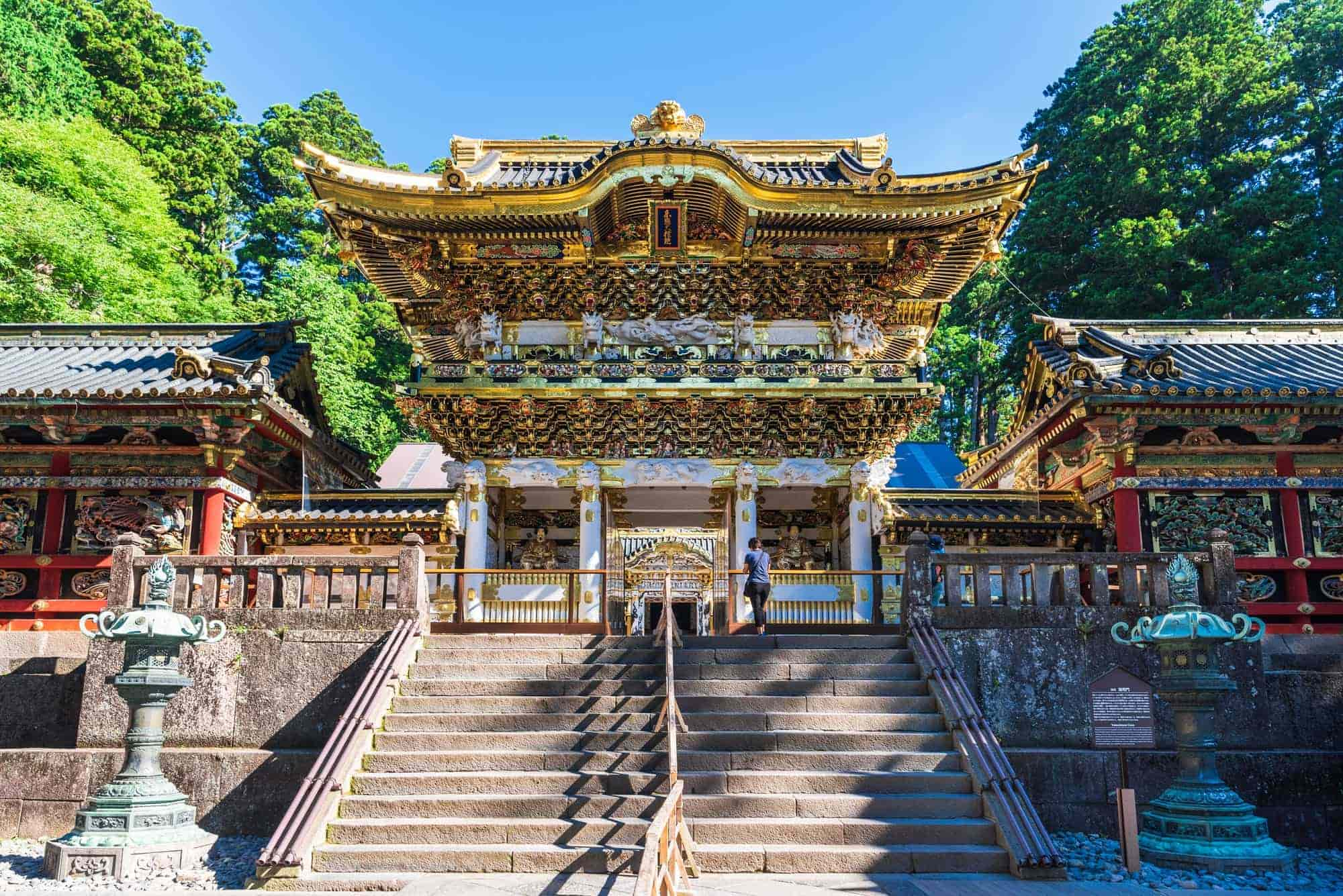
The "Yomeimon Gate" at Nikko Toshogu Shrine is renowned for its magnificent design and intricate carvings, making it one of the most beautiful gates in Japan. Designated as a National Treasure, this gate features over 500 carvings that depict Chinese legends and children's play. The diversity and artistry of these carvings are awe-inspiring, with each telling a story or imparting a lesson, stimulating the imagination and intellectual curiosity of visitors.
The Yomeimon Gate's grandeur goes beyond its opulent exterior. Among the twelve supporting pillars, one is intentionally installed upside down, known as the "inverted pillar of protection." This deliberately incomplete pillar is based on the belief that "perfection" symbolizes the beginning of decline, thus serving as a safeguard against evil and misfortune. Additionally, the gate's pinnacle features "oni-gawara" (demon tiles) that shine brightly, believed to prevent evil from entering through the gate and to protect the peace within the shrine grounds.
In 2017, the Heisei era restoration of Yomeimon Gate was completed, enhancing its brilliance even further. The restoration has made the details of the carvings more vivid and the colors more vibrant. This restored Yomeimon Gate offers an exceptional opportunity to witness a masterpiece of traditional Japanese architecture and carving art, leaving a profound impression on all who visit.
(Image Citation: THE GATE)
The Three Monkeys at Nikko Toshogu Shrine
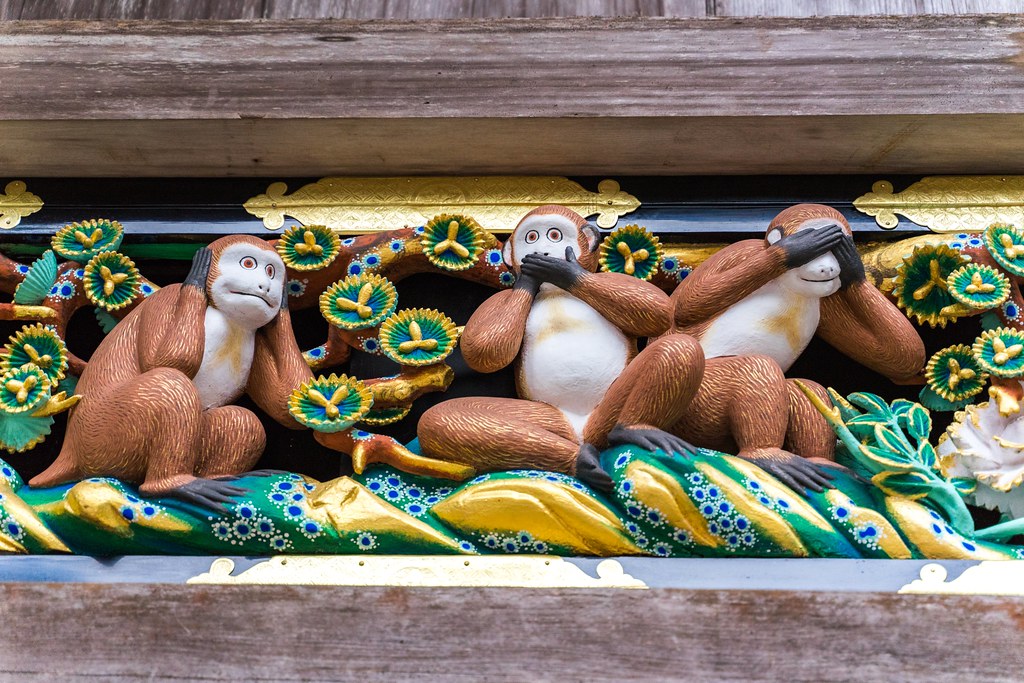
The Sleeping Cat
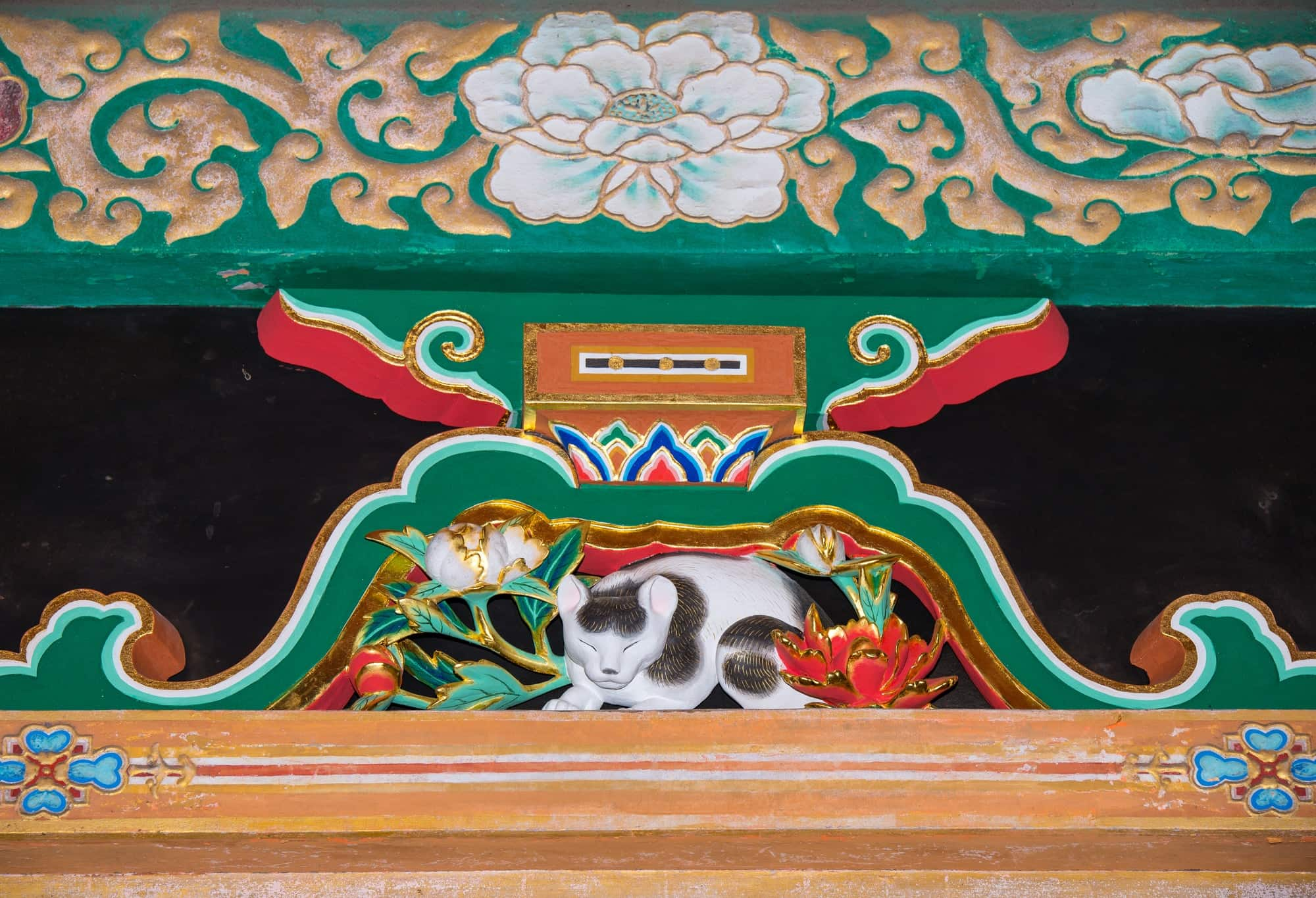
Among the splendid carvings at Nikko Toshogu Shrine, the "Sleeping Cat" stands out as particularly noteworthy. This small yet striking carving is located in the East Corridor, the entrance to the inner shrine, and continues to captivate visitors. As its name suggests, the Sleeping Cat depicts a cat peacefully sleeping with its eyes closed. However, depending on the observer's viewpoint, there is an illusion that the cat's eyes are open.
There is a deeper meaning behind this carving. On the reverse side of the Sleeping Cat, there are carvings of two sparrows playing. These sparrows symbolize peace, as cats are typically predators of sparrows. This carving is believed to represent an ideal world where natural enemies coexist, symbolizing a peaceful society.
This unique carving is traditionally attributed to the legendary sculptor Hidari Jingoro. Known for his exceptional skill and imaginative works, the legends surrounding Hidari Jingoro's creations continue to fascinate people to this day.
(Image Citation: THE GATE)
East and West Corridors
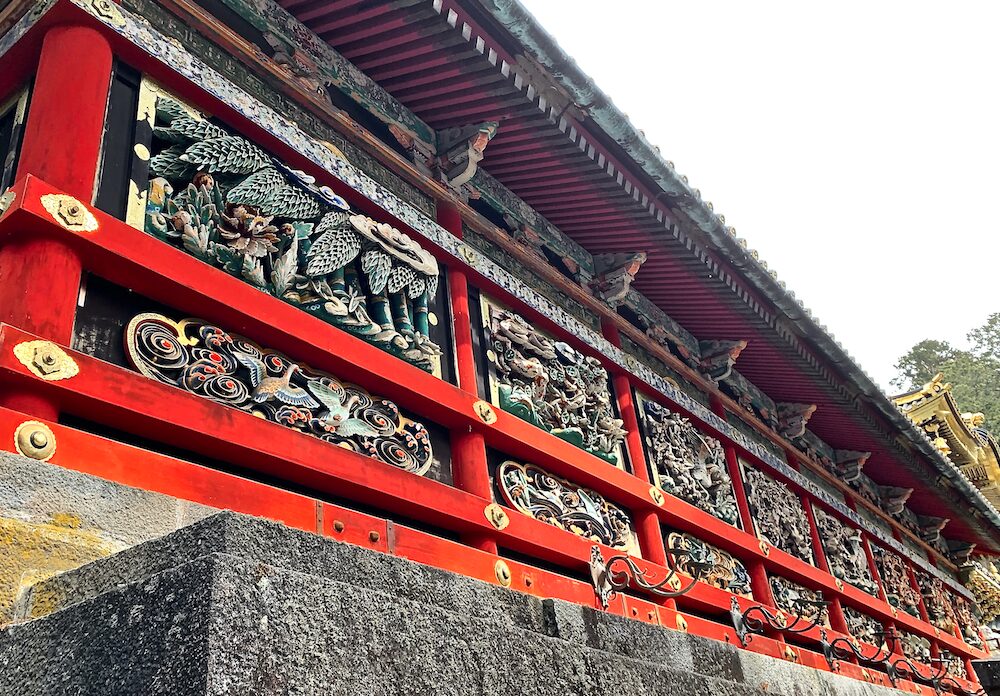
The "East and West Corridors" at Nikko Toshogu Shrine are national treasure-class structures that captivate visitors with their impressive length and exquisite carvings. Extending in a U-shape from the Yomeimon Gate, these covered corridors span approximately 220 meters and serve both as functional walkways and as overwhelming works of art.
It is said that these corridors were constructed with wishes for peace in mind, and their walls feature over 200 large carvings. These carvings are made using a technique called "sukashibori" (openwork carving), which involves cutting out the baseboard to create delicate patterns. What is particularly noteworthy is that all the carvings are crafted from single pieces of wood. This showcases the artisans' exceptional skill and dedication, embodying the pinnacle of traditional Japanese craftsmanship.
The carvings on the East and West Corridors often depict nature motifs such as flowers and birds, rendered with such dynamic force that they appear to be almost coming to life. The vibrant colors used in the carvings not only delight the viewers' eyes but also contribute to the overall splendor of Nikko Toshogu Shrine.
(Image Citation: 日光東照宮・御朱印)
The Main Shrine (Gohonsha)
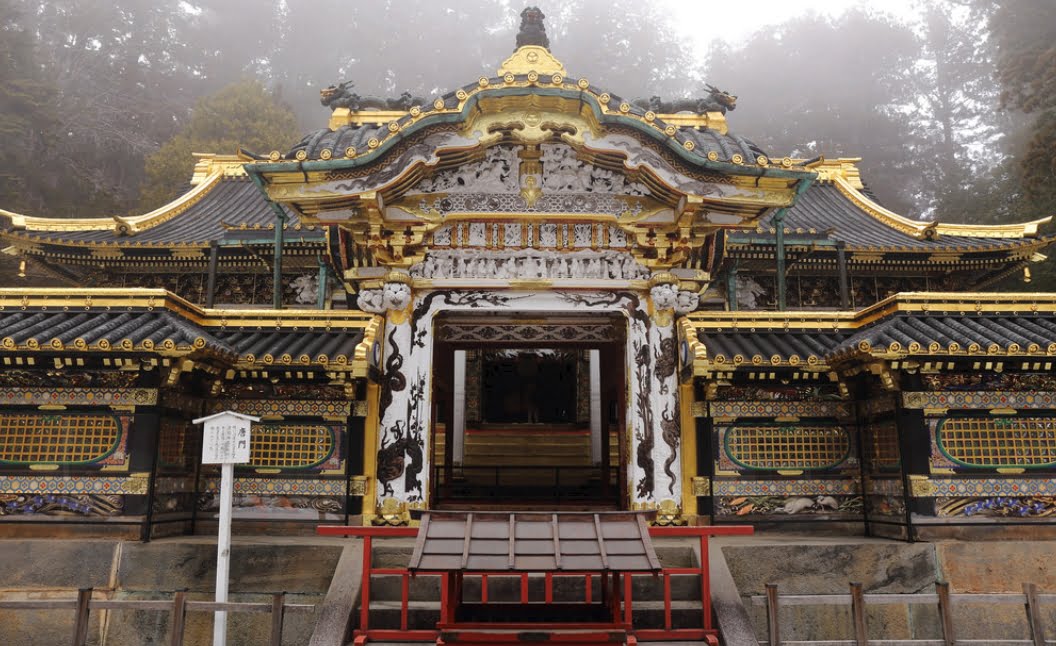
The "Gohonsha," considered the heart of Nikko Toshogu Shrine, is known for its sanctity and architectural beauty. This structure, which combines the main hall (honden), the connecting room (ishi-no-ma), and the worship hall (haiden) into one complex, represents the gongen-zukuri style of architecture. It is the most important place within Toshogu Shrine, hosting various ceremonial events throughout the year.
The Gohonsha is one of Japan's foremost architectural masterpieces, reflecting the lavish application of Edo-period construction techniques. Its value is immeasurable, and it has been designated as a National Treasure. The building contains about half of the approximately 2,468 carvings found on the Toshogu grounds, including the carving of the baku, a mythical creature believed to eat nightmares and bring peace. This baku carving is one of the features of the Gohonsha, symbolizing wishes for peace and tranquility.
(Image Citation: 日光東照宮・御朱印)
Five-Storied Pagoda
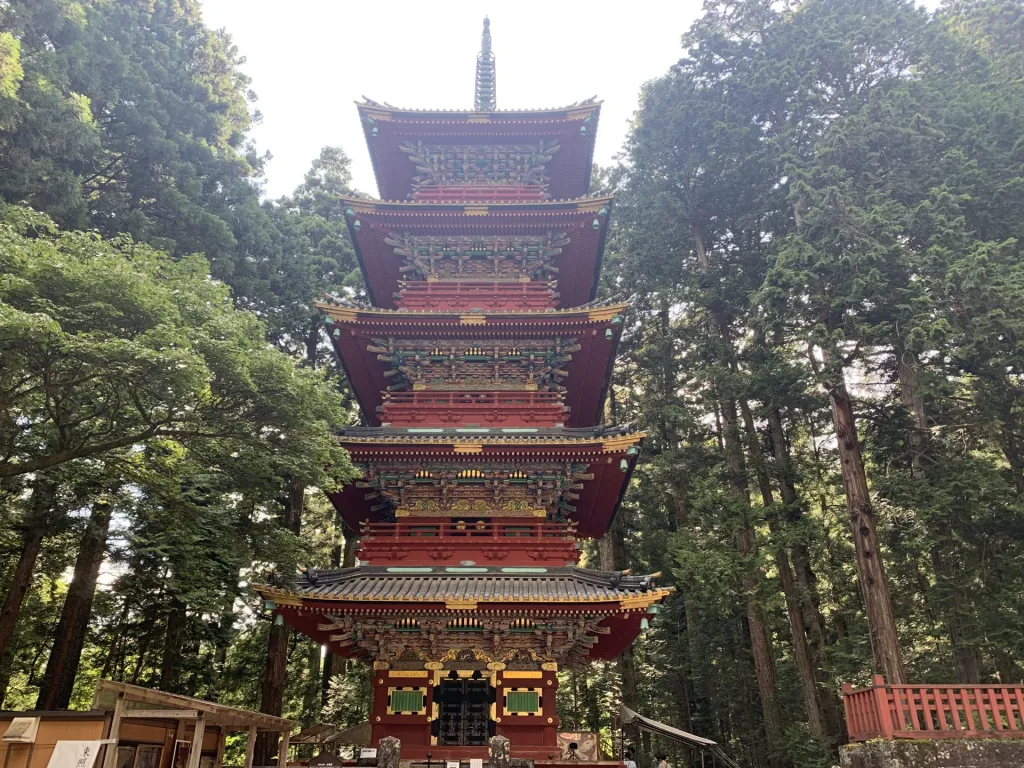
The "Five-Storied Pagoda," a symbolic presence at Nikko Toshogu Shrine, welcomes visitors with its impressive height of 36 meters. Designated as an Important Cultural Property, this pagoda is renowned for its unique architectural techniques and beautiful decorations, making it a standout among the historical structures in Nikko.
The most noteworthy architectural feature of the Five-Storied Pagoda is the method of suspending its central pillar (shinbashira). This technique enhances the structural stability of the pagoda and improves its resistance to natural disasters such as earthquakes. Indeed, it has been reported that the Five-Storied Pagoda sustained no damage during the Great East Japan Earthquake, demonstrating its precise construction and high level of safety.
Additionally, the Five-Storied Pagoda boasts unique architectural characteristics. While the first through fourth stories adopt the traditional Japanese (wayō) style, the fifth and topmost story is built in the Chinese (karayō) style. This unusual blend of Eastern and Western cultures creates a distinctive aesthetic. Moreover, the first story features carvings of the twelve zodiac animals, which further enhance the decorative appeal of the pagoda.
(Image Citation: ゆきとびたん)
The Three Sacred Storehouses (Sanjinko)
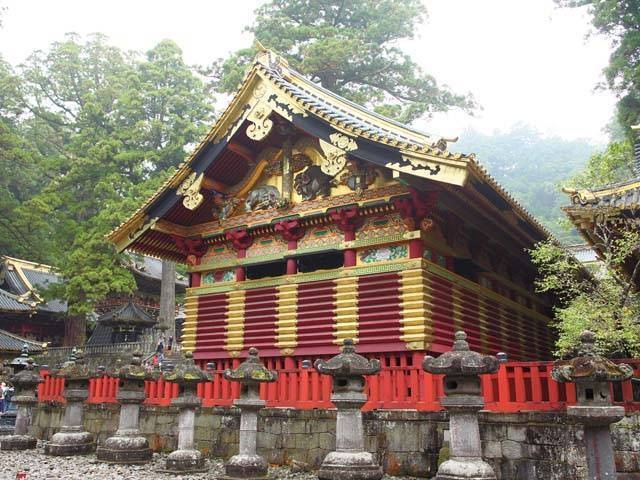
At Nikko Toshogu Shrine, the "Sanjinko" (Three Sacred Storehouses) collectively refer to the "Kamijinko" (Upper Sacred Storehouse), "Nakajinko" (Middle Sacred Storehouse), and "Shimojinko" (Lower Sacred Storehouse). These buildings are facilities for storing valuable tools used in ceremonial events, and due to their importance, they have been designated as Important Cultural Properties.
Notably, the "Kamijinko" houses the "Imaginary Elephants," one of the three major carvings at Nikko Toshogu Shrine. This carving attracts much attention from visitors. The elephants were created by the famous artist Kano Tanyu. It is said that Tanyu had never seen real elephants and created the carvings based on his imagination, which is the origin of the name "Imaginary Elephants." These elephants have many features that differ from real elephants, such as golden tusks and three tails. However, their exquisite expression gives them a charm that makes them appear like real elephants from certain angles.
The presence of the Sanjinko underscores the importance of ceremonial events at Nikko Toshogu Shrine, and these buildings, along with the valuable tools stored within them, play a crucial role in conveying the history and culture of the shrine. The carvings, including the "Imaginary Elephants," also exemplify the high level of artistry at Nikko Toshogu Shrine.
(Image Citation: まっぷる TRAVEL GUIDE)
Kanou Sugi (Wish-Fulfilling Cedar)
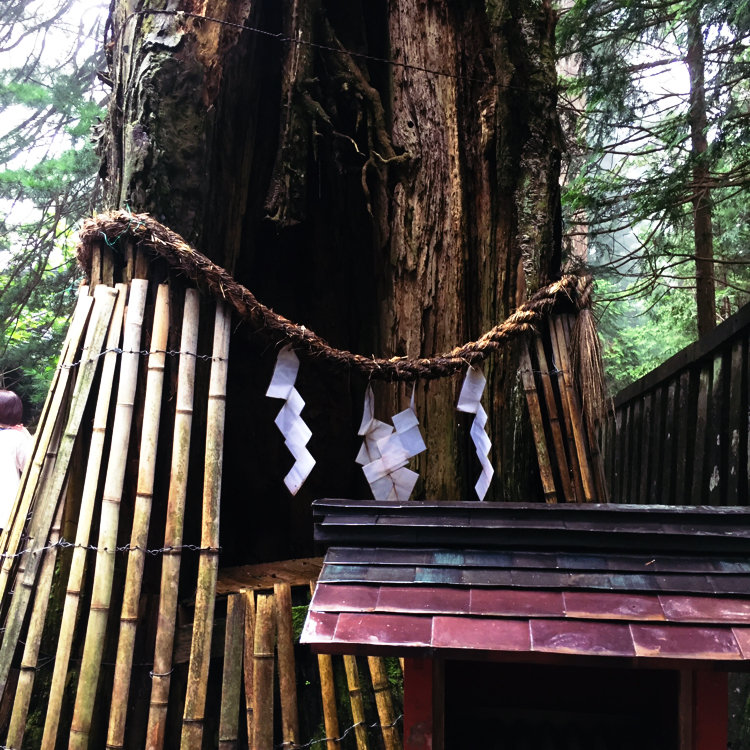
Nikko Toshogu Shrine is known for its splendid architecture and the rich natural surroundings of its historic site. However, there is one special spot that many visitors might overlook: the "Kanou Sugi" or "Wish-Fulfilling Cedar." This ancient tree, located in the inner shrine of Nikko Toshogu, is a giant tree over 600 years old. As its name suggests, it is considered a power spot that grants the wishes of those who visit.
The journey to Kanou Sugi is not an easy one. To reach it, visitors must climb a long flight of 207 steps. This challenging path leads to more than just an enormous tree. The Kanou Sugi is hollow inside, forming a natural shrine within the tree. It is believed that those who pray inside this hollow will have their wishes granted.
(Image Citation: ことりっぷ)
Trivia about Nikko Toshogu Shrine
Why Did Tokugawa Ieyasu Choose Nikko?
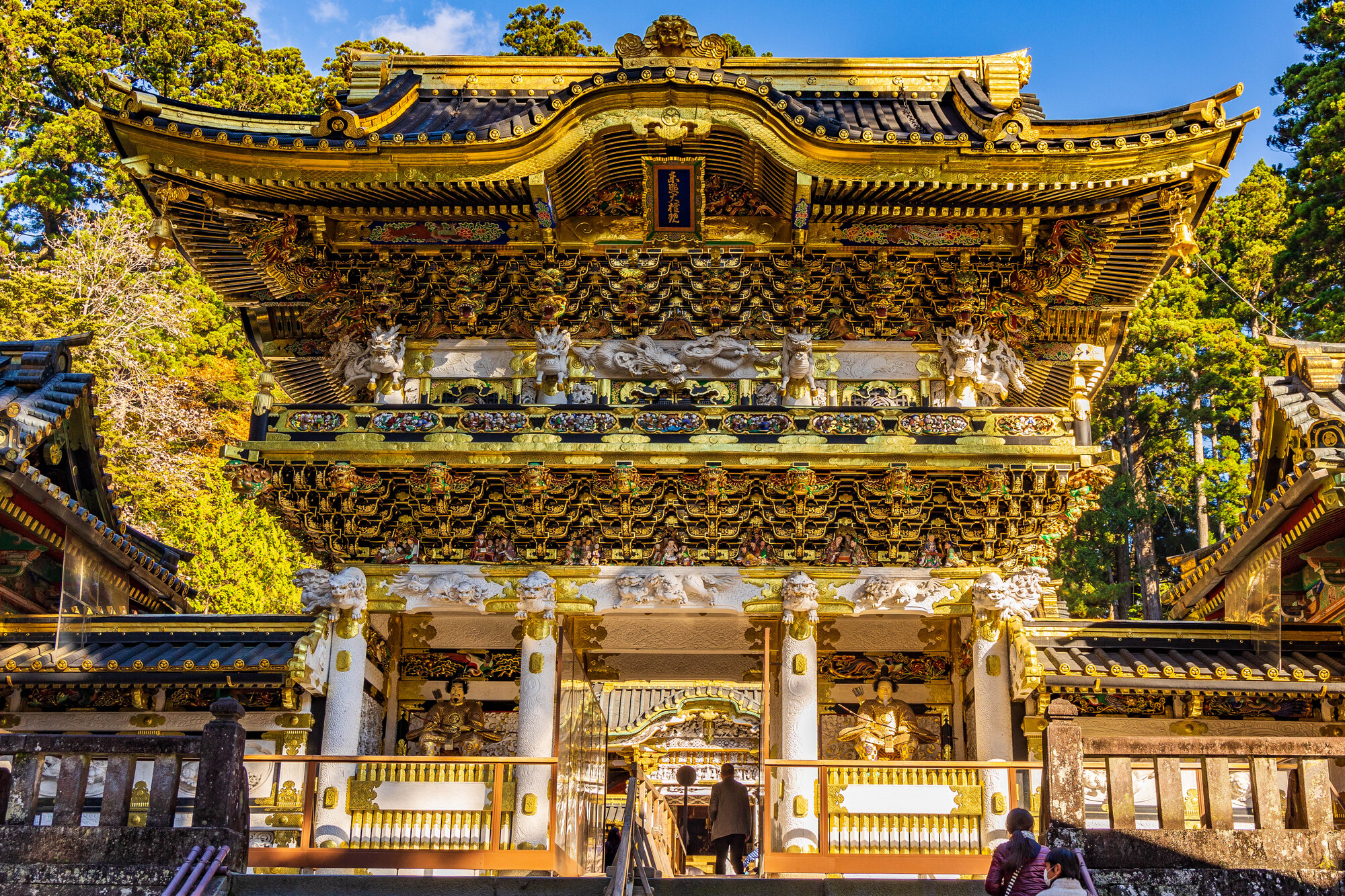
There are several theories as to why Tokugawa Ieyasu desired to be enshrined at Nikko, a place he did not spend much time in during his life.
One theory is that Ieyasu respected Nikko's history as a sacred site of mountain worship. Nikko was a place where Minamoto no Yoritomo, who founded the Kamakura shogunate, also made donations, and Ieyasu claimed to be a descendant of the Minamoto clan. Therefore, by revitalizing Nikko, Ieyasu could have intended to show respect to the Minamoto clan and further elevate his own authority.
Another reason is that Nikko is located in the direction of the North Star (Polaris) from Edo. The North Star has long been a symbol of stability and permanence. It is believed that Ieyasu chose to be enshrined at Nikko with the hope that his reign would endure forever, symbolized by the constancy of the North Star.
Furthermore, it is said that Ieyasu felt a special connection to the majestic nature and spiritual energy of Nikko. Like Shodo Shonin, who founded Nikkozan, Ieyasu deeply understood the sanctity of this place and wished to become part of it, praying for a peaceful era.
(Image Citation: kkday)
The Inverted Pillar of Protection at Yomeimon Gate
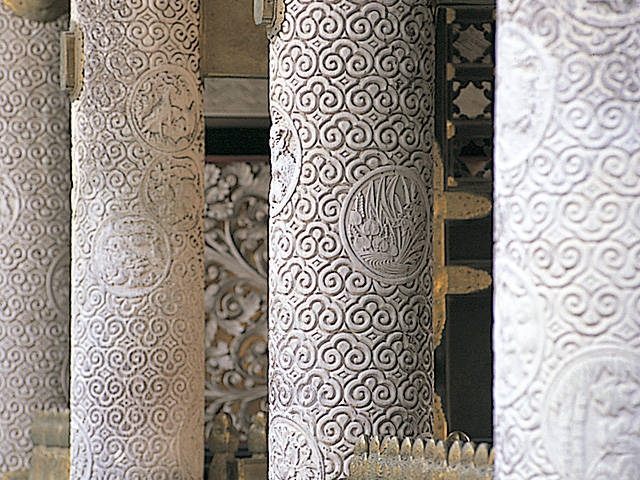
The Yomeimon Gate at Nikko Toshogu Shrine is known for its grand structure and beautiful decorations. However, it has a unique feature: one of the twelve pillars is intentionally installed upside down. This unusual pillar is called the "inverted pillar of protection" (magical protection pillar), and it has fascinated many people over the years.
This inverted pillar is located on the north side (back side), in the second position from the west. The pillar is adorned with a beautiful curved pattern called "guri" design, a decorative technique also seen in Chinese carved lacquer designs. However, this one pillar is different from the others, being installed upside down.
There is a theory that this inverted pillar symbolizes the proverb "when something is complete, it begins to decline." According to this belief, intentionally incorporating an imperfect pillar into the Yomeimon Gate was meant to ward off bad luck that might be attracted by perfection and to serve as a talisman for protection. In other words, this inverted pillar was intentionally designed to protect the gate and its visitors.
Additionally, it is said that the Yomeimon Gate is still incomplete. This state of incompletion may also be based on the idea of avoiding perfection to keep evil away.
(Image Citation: まっぷるTRAVEL GUIDE)
The Zodiac Carvings on the Five-Storied Pagoda
Nikko Toshogu Shrine, known for its luxurious decorations and architecture, is a treasure trove of Japanese cultural heritage and is famous worldwide. Among the remarkable structures, the beautiful five-storied pagoda stands out. One of the most intriguing features of this pagoda is the zodiac carvings on the wall of the first tier.
The zodiac, known as "eto," is a traditional system that uses twelve animals to represent years. Usually, these animals start with the rat (ne), followed by the ox (ushi), and the tiger (tora), continuing in that order. However, at the five-storied pagoda of Nikko Toshogu Shrine, there is an unusual arrangement. Remarkably, the zodiac carvings on this pagoda start with the tiger (tora) and continue counterclockwise.
This unique arrangement has an interesting background related to the Tokugawa family, to whom the Nikko Toshogu Shrine is dedicated. The story goes that the zodiac sequence starts with the tiger to honor Tokugawa Ieyasu (zodiac: tiger), his son Hidetada (zodiac: rabbit), and his grandson Iemitsu (zodiac: dragon), aligning with the zodiacs of the first three Tokugawa shoguns in this order. Therefore, the zodiac carvings on the five-storied pagoda are thought to express respect for the Tokugawa family.
Why the Sleeping Cat is the Only Cat Carving
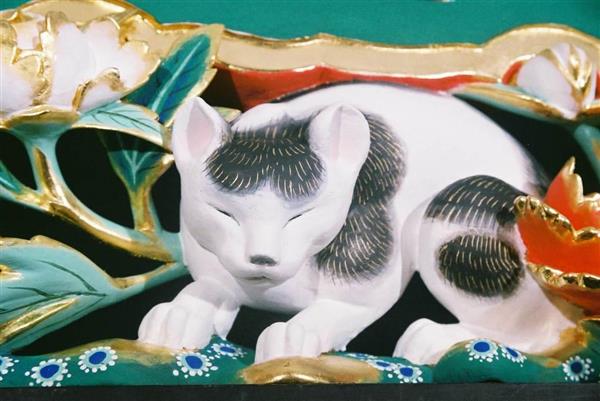
Nikko Toshogu Shrine is adorned with many magnificent carvings, but among them, the "Sleeping Cat" is widely known as a special presence. The reason this cat carving stands out lies in its deep meaning. The Sleeping Cat is the only cat depicted among the carvings at Toshogu Shrine, making its existence particularly noteworthy. The fact that there is only one such carving suggests that it carries a special message.
The key to uncovering this message lies in the nature of the Sleeping Cat carving and the sparrow carving on its reverse side. Generally, cats are predators of sparrows, but this Sleeping Cat is peacefully sleeping, and on the reverse side, sparrows are depicted playing without fear. This arrangement represents the peaceful coexistence of the cat and sparrows, symbolizing a wish for peace and the virtue of living in harmony.
The Sleeping Cat is considered a symbol of peace, as it represents an ideal world where there is no conflict and everyone can coexist. This unique cat carving at Nikko Toshogu Shrine quietly conveys the importance of peace and harmony to all who visit.
(Image Citation: 産経ニュース)
The Meaning of the Baku at Nikko Toshogu Shrine
Nikko Toshogu Shrine features numerous carvings of sacred beasts, among which the "baku" is particularly noteworthy. The baku is depicted almost as frequently as the Chinese lion (karajishi) and the dragon, and its unique presence catches the eye of visitors. The baku is a mystical creature said to "eat nightmares," and therefore, it is believed to have a protective effect against evil. Interestingly, the baku is also said to consume metals such as copper and iron. This characteristic suggests that the baku is a symbol of peace.
An abundance of copper and iron usually indicates an era where there is no need for weapon manufacturing, meaning a time of peace without conflict. The legend that the baku can survive by eating copper and iron implies that the baku can exist only in peaceful times. Therefore, the numerous baku adorning Nikko Toshogu Shrine symbolize the peaceful era brought about by Tokugawa Ieyasu and the hope for the continuation of that peace.
In reality, the Edo period initiated by Tokugawa Ieyasu lasted for over 200 years of peace, excluding the turmoil at the end of the era. During this time, metals needed for weapon production were not heavily consumed. This fact demonstrates that the peace symbolized by the baku was realized.
The "Karako Asobi" Carvings on Yomeimon Gate
Summary
How was it? This time, we introduced the history, highlights, and trivia of Nikko Toshogu Shrine. The shrine was established to enshrine Tokugawa Ieyasu, who founded the Edo Shogunate, and each decorative element in the architecture has various meanings. Knowing this background will allow you to enjoy Nikko Toshogu Shrine from a different perspective when you visit.
Our site also introduces various other interesting aspects of Japanese history and culture besides Nikko Toshogu Shrine. If you are interested, we would be delighted if you read our other articles as well!



